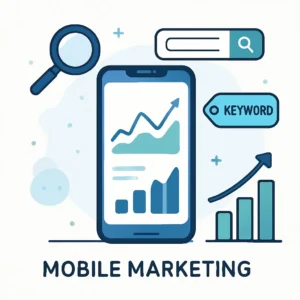

What is Search Intent
Search intent, also known as user intent, is the reason behind a user’s search query on a search engine. Understanding search intent is essential for crafting effective SEO strategies, delivering better user experiences, and ultimately driving conversions. In this guide, we’ll explore the different types of search intent, why it matters, and how to align your content strategy with user intent.
Table of Contents
ToggleWhat is Search Intent?
Search intent refers to the goal or purpose a user has when entering a query into a search engine. It reveals what the user is looking to accomplish, whether it’s gathering information, making a purchase, or finding a specific website.
Google and other search engines prioritize content that aligns with user intent, as it ensures users find the most relevant and helpful results for their queries. This focus on intent has transformed SEO from being keyword-centric to being intent-driven.
Why Search Intent Important
Improved Rankings: Google’s algorithm, including updates like BERT and MUM, is designed to understand the context and intent behind queries. Aligning your content with search intent can improve your rankings on search engine results pages (SERPs).
Higher Engagement: Content that matches search intent leads to better engagement metrics like click-through rate (CTR), time on page, and lower bounce rates. These metrics signal to search engines that your content is valuable.
Increased Conversions: When you address what users are looking for, they’re more likely to take the desired action, whether it’s signing up for a newsletter, making a purchase, or downloading a resource.
Enhanced User Experience: Providing content that fulfills user needs creates a seamless and satisfying experience, fostering trust and loyalty among your audience.
Types of Search Intent
There are four primary types of search intent:
1. Informational Intent
Users with informational intent are looking for answers or learning about a topic. These searches typically include questions or phrases like “how to,” “what is,” or “guide.”
- Example Queries:
- “What is search intent?”
- “How to bake a chocolate cake”
- “SEO tips for beginners”
Content that serves informational intent includes:
- Blog posts
- How-to guides
- Tutorials
- Infographics
- Educational videos
2. Navigational Intent
Navigational intent occurs when users want to find a specific website, brand, or online resource. These users already know where they want to go but use the search engine as a shortcut.
- Example Queries:
- “Facebook login”
- “HubSpot blog”
- “YouTube homepage”
For navigational intent, ensuring your brand appears prominently for relevant queries is critical. Optimize your site’s structure, meta descriptions, and branded keywords to capture this traffic.
3. Transactional Intent
Transactional intent indicates that a user is ready to take an action, often a purchase or subscription. These queries include terms like “buy,” “discount,” “coupon,” or “best price.”
- Example Queries:
- “Buy iPhone 15 online”
- “Best hosting services for WordPress”
- “Nike shoes discount code”
To target transactional intent, create:
- Product pages
- Reviews and comparisons
- Landing pages
- Calls-to-action (CTAs)
4. Commercial Investigation Intent
This type lies between informational and transactional intent. Users are researching products or services before making a decision. They’re not ready to buy yet but are gathering information to evaluate their options.
- Example Queries:
- “Best smartphones under $500”
- “Bluehost vs HostGator”
- “Is Netflix worth it?”
Content for commercial investigation intent includes:
- Product comparisons
- Reviews
- Case studies
- Buying guides
Identifying Search Intent in Keywords
To align your content strategy with search intent, it’s essential to understand the intent behind the keywords you target. Here are some steps:
1. Analyze Query Language
The words used in a search query can reveal the intent. For instance:
- “Buy” or “cheap” often indicates transactional intent.
- “How to” or “guide” suggests informational intent.
- Brand or product names point to navigational or transactional intent.
2. Study SERP Features
Google’s SERP layout provides clues about intent. Look for:
- Featured snippets, knowledge panels, or “People also ask” sections: Often indicate informational intent.
- Shopping ads or product carousels: Suggest transactional intent.
- Site links: Likely navigational intent.
3. Use Keyword Research Tools
Tools like Google Keyword Planner, SEMrush, or Ahrefs can help identify keywords and categorize them by intent based on their search volume, CPC (Cost Per Click), and competition level.
How to Optimize Content for Search Intent
Once you understand the intent behind your audience’s queries, you can tailor your content to meet their needs. Here’s how:
1. Map Content to Intent
Create a content plan that aligns with different types of intent:
- Informational: Blog posts, explainer videos, tutorials.
- Navigational: Homepage, About Us page, brand-focused landing pages.
- Transactional: Product pages, discount offers, checkout pages.
- Commercial Investigation: Buying guides, comparison articles, user reviews.
2. Craft Engaging Titles and Meta Descriptions
Ensure your titles and meta descriptions clearly reflect the intent of your content. For example:
- For transactional intent: Use phrases like “Buy Now” or “Exclusive Discounts.”
- For informational intent: Use phrases like “Learn More” or “Complete Guide.”
3. Provide Value with Relevant Content
Google prioritizes content that fulfills the user’s needs. Ensure your content is:
- Comprehensive and answers all potential user questions.
- Structured with headings and subheadings for readability.
- Enhanced with visuals, such as images, charts, and videos.
4. Monitor Performance
Use tools like Google Analytics and Google Search Console to track how your content performs. Key metrics include:
- Click-through rate (CTR)
- Time on page
- Bounce rate
- Conversion rate
Adjust your strategy based on performance data to better meet user needs.
Common Mistakes in Addressing Search Intent
Targeting the Wrong Intent Publishing content that doesn’t align with user intent can result in poor rankings and low engagement. For instance, promoting a product on a page meant for informational intent may frustrate users.
Overlooking SERP Clues Ignoring the layout of the SERP for your target keywords can lead to mismatched content. Always review SERPs before creating content.
Keyword Stuffing Trying to rank for keywords without considering their intent leads to subpar content and potential penalties from search engines.
Neglecting Mobile Optimization With the majority of searches happening on mobile devices, ensure your content is mobile-friendly to provide a seamless experience.
The Future of Search Intent
Search engines are becoming increasingly sophisticated in understanding search intent. AI-driven tools, voice search, and conversational queries are shaping the future of how intent is interpreted.
To stay ahead:
- Focus on semantic SEO, which emphasizes the meaning behind queries.
- Embrace AI tools to analyze and predict user behavior.
- Continuously adapt your content strategy to align with evolving user expectations.
Conclusion
Mastering search intent is the cornerstone of a successful SEO and content marketing strategy. By understanding what your audience wants and tailoring your content to meet their needs, you can improve rankings, enhance user experience, and drive conversions. Remember, the goal isn’t just to attract traffic but to deliver value and build lasting relationships with your audience.
Related Posts
Private Socks Proxies
Howdy just wanted to gijve you a quick heads up and let you know a few of the pictures aren’t loading correctly.
I’m not sure why but I think its a linking issue. I’ve tried it in two different browsers and
both show the same outcome.






















3 comments